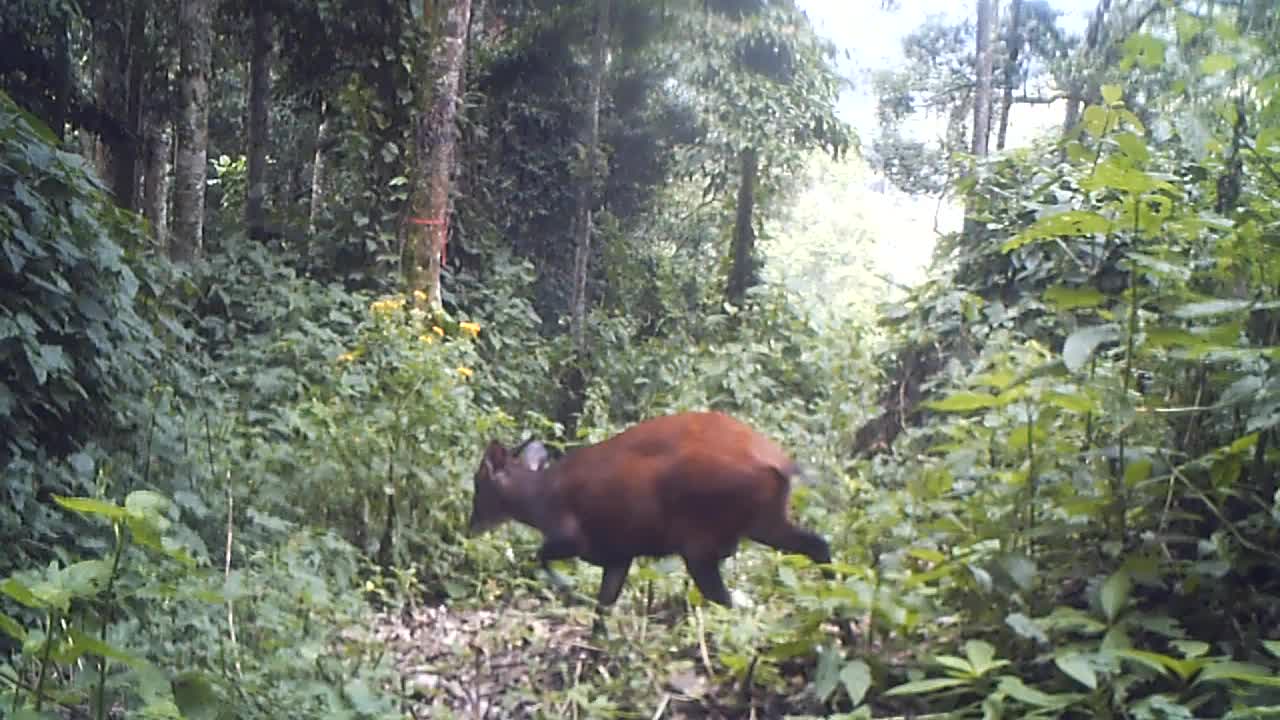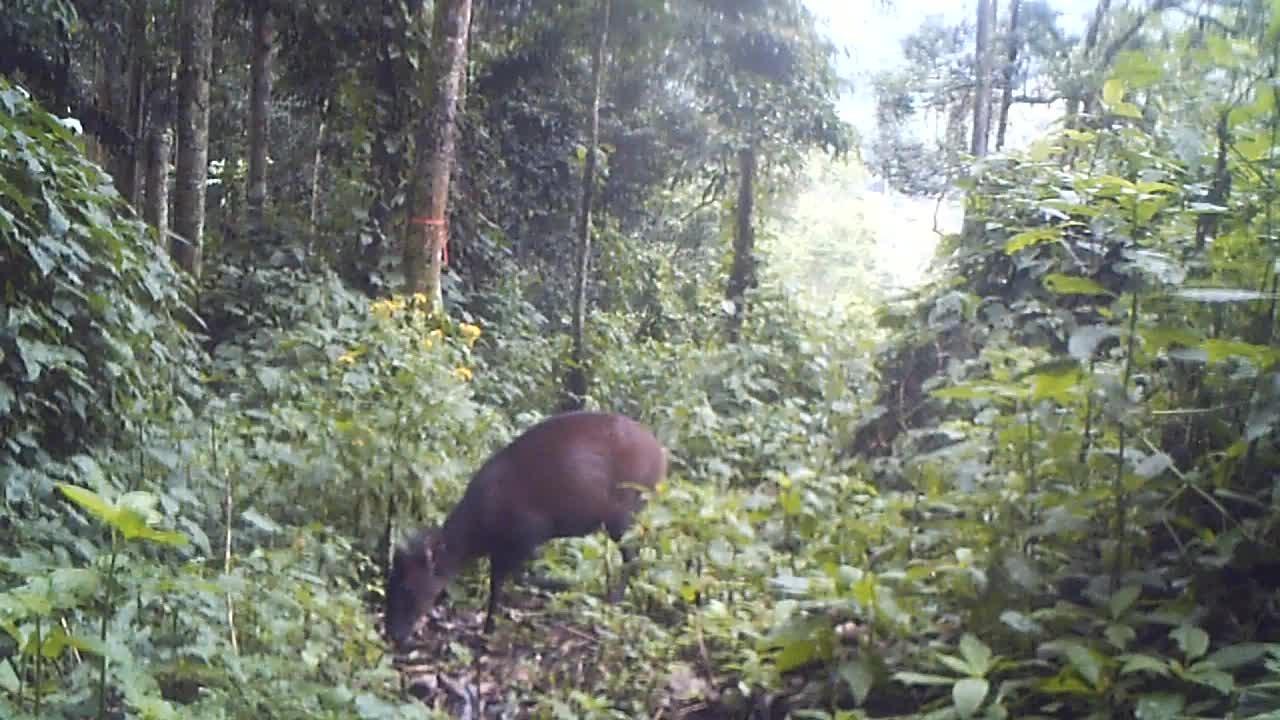Question about proceeding / tagging
-
 by
luca-chimp
by
luca-chimp
I'm unsure how to act: Example: I see something in a sequence. I tag and change to the discussion bord. There I can see, that I'm not the first one, others have tagged the clip too. What shall I do then, when my tagging would be the same? Nevertheless tagging? Tagging when only one ore two where before? Not tagging when a moderator tagged? ... Thanks for answering.
Posted
-
 by
jwidness
moderator
by
jwidness
moderator
There are some cases when additional tags are especially helpful. First, if you add information that isn't already there -- for example, maybe the video has chimp and restlessstar, so adding female or carrying_young is definitely helpful. Second, if you disagree with a tag already there -- for example, someone has tagged male, but you think it's female.
In cases where your tags would be exactly the same as previous ones, it's a bit less important to add them, but it's not bad either.
Posted
-
 by
luca-chimp
by
luca-chimp
Ok. I understand. May I ask another question? How important is it, to count and tag every single duiker-back in africa? 😉 I confess, I'm not allways willing to do so, what is the right way than: to click: nothing there or to reload the site? ... sorry for my askings in all directions! I want to catch all the rules and particularities as quick as possible. Hope I do not annoy you
Posted
-
 by
jwidness
moderator
by
jwidness
moderator
I'm not sure I completely understand your question, but please don't ever mark "nothing here" unless there is really nothing there! All tagging is completely optional, but the chimp tag is the most important one. Thanks so much for your participation!
Posted
-
 by
luca-chimp
by
luca-chimp
My question was: Is pressing "nothing there" the same function in the software as "reload" the site? When I (for example) see in the pictures a night sequence with eyes of a ...maybe duiker (Im really no expert in duikers and other animals out there in the night) I do not want to guess something wrong. You are right, I cannot press "nothing there", because there IS something. So, what happens, if I reload the site to the next sequence ... ok or not ok? (I'm so sorry for my bad english!)
Posted
-
 by
jwidness
moderator
by
jwidness
moderator
"Nothing here" is NOT the same as reloading. It's very important to only use "nothing here" when you do not see any animal. Don't worry too much about guessing though, lots of people watch each video and mark it. 😃 You can read a little more about how guesses are still useful from this Snapshot Serengeti blog post.
Posted
-
 by
MimiA
scientist, moderator
by
MimiA
scientist, moderator
Hi @luca-chimp I agree with you, the duikers are not my favourite either, but to get through the videos it is important to tag them for us. Also, if you skip them, someone else will have to view them and we will go through the videos slower, so please take then time to code each video you watch 😃
As @jwidnessn said, definitely do not use "nothing there", since videos with 3 people annotating as "nothing there" are retired and that means we will lose the data for those videos. (Videos with humans are also retired after 3 annotations and all other videos are viewed 7-15 times.)
Duikers are food competitors (and sometimes prey) for chimpanzees, so it is important to know their density, if you ignore them then our results will be skewed toward lower densities of these animals.
As @jwidness said, guessing is always the way to go when you aren't sure. As the blog post shows, it should all be clearer in the accumulated data! 😃
If you are only really interested in the chimps then hang out in Talk and do chimp matching, then you don't have to worry about those duikers 😉 You can use the chimp list to guide your matching efforts! https://docs.google.com/spreadsheets/d/1VuVWXWdZHB6p11qpCxIweWFstwgFavT1e5iazqajrlQ/edit
thanks!!!
Posted
-
 by
luca-chimp
by
luca-chimp
@MimiA Thanks for your answer. Slowly I get used to theese duikers 😃 But I often very unsure, because they nearly all looks in a kind "red" for me I have really problems to get the differences and then I'm ashamed of guessing wrong. In the meantime I changed my routines. At the beginning, I trusted the pictures to decide seeing or nothing her … but so often something is only to see, if you look every single second. So I relax after work, looking sequences ... and counting duikers, red ones or whatever 😃 With the chimp "matching" I will now wait a bit longer and first read more and learn, I'm anxious to annoy the others with my beginners-greenhorn-enthusiasm 😉
P.S: WOW .... this spreadsheets are ... WOW
Posted
-
 by
jwidness
moderator
by
jwidness
moderator
Some duiker tips for restless star (which is now the only site in classification): we expect to see just two kinds of duiker here, yellow-backed and red. Yellow-backed duikers are very large, have a yellow stripe down the back, and are almost always seen at night. The red duikers here are almost always seen during the day, and range from bright red to very dark red. For more duiker help, you can check out the duiker guide. And if you run into any confusing videos, feel free to ask about them!
Yellow-backed:

Red (brighter):

Red (darker):

Posted
-
 by
MimiA
scientist, moderator
by
MimiA
scientist, moderator
don't ever worry about annoying people here! Everyone here has gone through the same learning process and we are all STILL learning 😄 Just keep asking and doing your best. The videos are viewed by lots of people and based on the snapshot serengeti results, the consensus annotations have very high certainty level (even better than single experts!) so just keep doing your best and don't be ashamed, the duikers are really tough!!! For us even knowing they are duikers and not something else is useful so marking them as duikers, is still a big help! Thank you for sticking with us, I know its a bit intimidating but I hope you find it fun and rewarding too! The science team appreciates everyone's help so much and we can;t do it without you!!!
Posted
-
 by
luca-chimp
by
luca-chimp
@jwidness --- thanks for the pics! Thats my point. When i see a duiker, I have (in the first tagging window) only this duiker-selection:
-dark duiker- jentink's duiker
-red duiker
-small grey duiker - zebra duiker
So, now, what do, if it is perhaps your citet : "yellow-back" is in the film ... I HAVE no other choice, than to pick one out of the list (knowing, that it is none of them), and than I can change in the discussion-board, to tag with hashtag the right name, or just "duiker". It would be so helpfull and easier to have this choice "duiker" in the first selection. Know, what I mean?
Posted
- jentink's duiker
-
 by
luca-chimp
by
luca-chimp
@MimiA: it IS intimidating 😃 But I really love to be part und have so much fun. And all of you makes it easy to fit in and leanr all these puzzling-details quite qick. Thanks a lot.
Posted
-
 by
MimiA
scientist, moderator
in response to luca-chimp's comment.
by
MimiA
scientist, moderator
in response to luca-chimp's comment.
@luca-chimp - we are happ to have you here! let us know whenever you have questions 😃
Posted
-
 by
ksigler
moderator
in response to luca-chimp's comment.
by
ksigler
moderator
in response to luca-chimp's comment.
Yellow-backed are considered dark duiker. In the classification screen, you can open the field guide and see examples and descriptions of what is included in each classification option. Sometimes it can be counter-intuitive, and it even helps me to re-read them from time to time as a refresher. It is updated to provide more clarification when we encounter new or confusing species. For example, the guide listing for dark duiker is:
DARK DUIKER
Cephalophus genusUse this option to mark any duikers that are dark grey, black, or dark brown in color. Dark duikers include the yellow-backed duiker, a large duiker notable for a bright yellowish stripe on the back of a brown coat with a partially yellow muzzle, and the black duiker, which is medium-sized, solid black on the body, fading into red on the head, and with a white tail tip. Like other duikers, they have arched backs, stocky bodies and slender legs. Yellow-backed duikers are more often seen at night, while black duikers are seen during the day or at dawn/dusk.
Posted
-
 by
jwidness
moderator
in response to ksigler's comment.
by
jwidness
moderator
in response to ksigler's comment.
Thanks for adding that about the dark duiker classification @ksigler -- I realized after I'd gotten in bed last night that I should have said it in the first place!
Posted
-
 by
luca-chimp
by
luca-chimp
😃 so soon I will impress all in my surrounding about profund duiker knowledge 😎 Thanks a lot
Posted
-
 by
MimiA
scientist, moderator
by
MimiA
scientist, moderator
LOL! thanks for sticking with it, and us!
Posted